Observations

30 Years with Homoeopathy – Gratitude
This post was originally published on 28th February 2015, marking the completion of 25 years, but has been reproduced today – 28th February 2020 – as the feeling of gratitude is the same, if not more, at 30 years, as it was at 25.
”
28 February 1990 to 28 February 2015,
25 YEARS WITH HOMOEOPATHY:
It has been quarter of a century of my official association with homoeopathy and homoeopaths.
In 1967 Dr M. L. Dhawale started treating my mummy for poly articular RA. She became better, and has been on homoeopathy ever SINCE. That good vibes about homoeopathy (from my childhood) allowed me to be positive about it, and I wanted to kind of “payback” the science (which made such a big positive difference to my mother’s health.). That OPPORTUNITY, nature brought about by getting me an honorary orthopaedic surgeon/ teacher post at the homoeopathic medical college hospital at Irla on 28 Feb. 1990. A HUGE THANKS TO ALL OF YOU.
What started in 1967 as a point of contact in a huge tapestry of destiny, turned out to be concept – altering, horizon -widening era for me, later in life.
When I had promised, the then principal of “a fruitful association” on day 1, – I could not imagine -it would bring up so many learnings and positive experiences in my life as a doctor and teacher.
Homoeopathy, the science and my homoeopath friends and colleagues provided me the direct experiences /homoeopathic support /learnings to make me realise the different aspects of humans in disease and in health.
Treating hundreds and thousands of patients with my modern medicine knowledge in light of homoeopathic understanding of the disease and usage of homoeopathic therapeutics put me on a path of discovery.
I discovered the facets of human psychodynamics, the deeper roots of pathological disease in mind, the human potential to heal from disease. Observing how seemingly surgical-indicated cases started healing WELL, non-surgically – – put me on an evolutionary track of understanding disease from a larger, deeper perspective.
So in a sense, I owe a huge part of my transformation … from an orthopaedic “surgeon “fixing fractures to a “clinician” treating & understanding musculoskeletal disorders – – to homoeopathy & homoeopaths. The Organon teaching of “utilising all known sciences/ knowledge” and being “an unprejudiced observer” helped me treat patients at a better level, than I knew, and I was able to integrate the two sciences. In fact I was lucky to have the best of both the worlds.
Perseverance, hard work (by all, my homoeopath colleagues – juniors and seniors and me), coordinating our sciences and trying some new thoughts, bolder initiatives in therapeutics, auxiliary modes… started and continued to give us gratifying results. We had our own share of failures, but that, kind of put us on an alert mode, all the time and kept us grounded to reality. We realised which cases will be better treated with what approach and which will give us poorer results.
But the maximum pleasure came from two things 1) the “jalwa” cases showing stupendous positive results in seemingly very bad pathological cases. 2) The “routine” orthopaedic pains which showed good palliation /relief and cure with economically the cheapest option (that is homoeopathy) + common sense advice.
I had always had the itch to teach. Students at the college gave me the opportunity to teach them. The pleasure of seeing a young, bubbly, enthusiastic mind, curious to learn and fathom the vast subject of human disease, is something indescribable, – – and subsequently THAT growing up, in front of you to become a compassionate, knowledgeable healer is a kick which is a great treasure for me. I really have to convey my gratitude to the scores of students that I taught, for the happiness they provided me as a teacher. They were responsible for me staying in touch with the new generation’s thought process. They allowed the zest and enthusiasm of youth to continuously keep me updated and young.
Some of these students, house-physicians, assistants gave me further level of pleasure by becoming betas/ betis and becoming part of family. Their growth from very young and immature ” dhamaal “people to practicing doctors, maa/ baap of kids and remaining “dhamaal “people was another happiness to add in my life.
I CANNOT FORGET the patients at homoeopathy hospital, they gave me an opportunity to me, to” pay back” to society by doing free service to thousands of them spread over two decades. They allowed me the use of my integrated approach. I am indebted to them for their unflinching faith and respect in my work and skill. I was able to provide a very cheap but good alternative treatment option for the musculoskeletal complaints in the OPD and wards, purely because of the unquestioning faith of patients in me.
So, in short, it has been a great journey of 25 years for my association with homoeopathy. That sense of fulfilment, achievement and job satisfaction, through these decades … I would transform to a BIG SENSE OF GRATITUDE to all concerned.
”

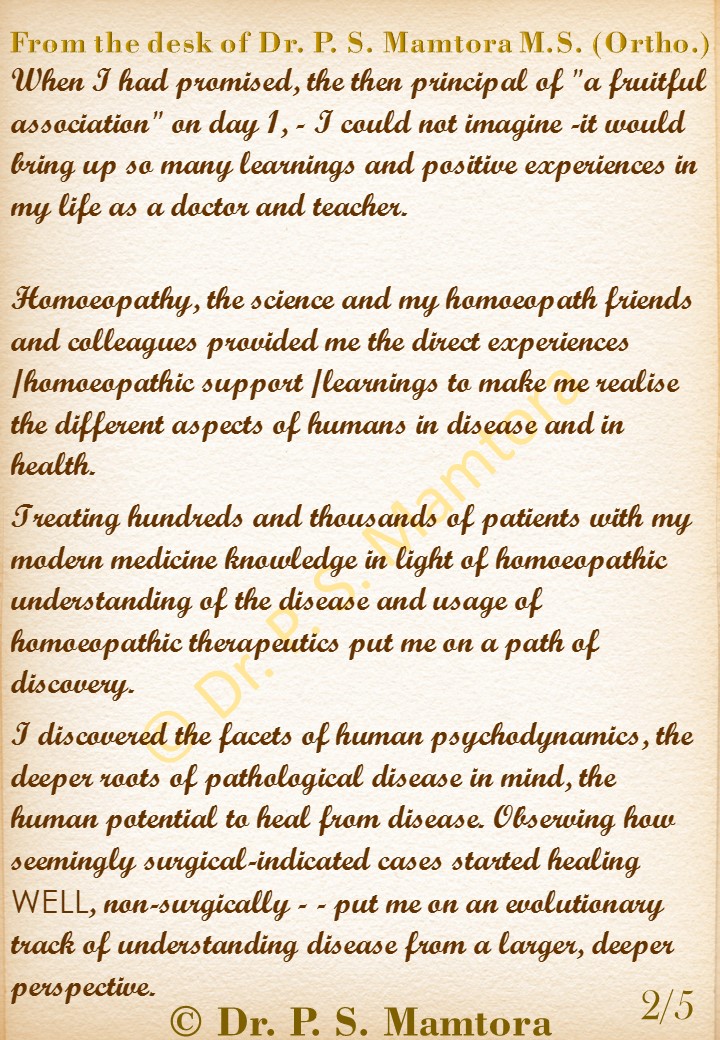
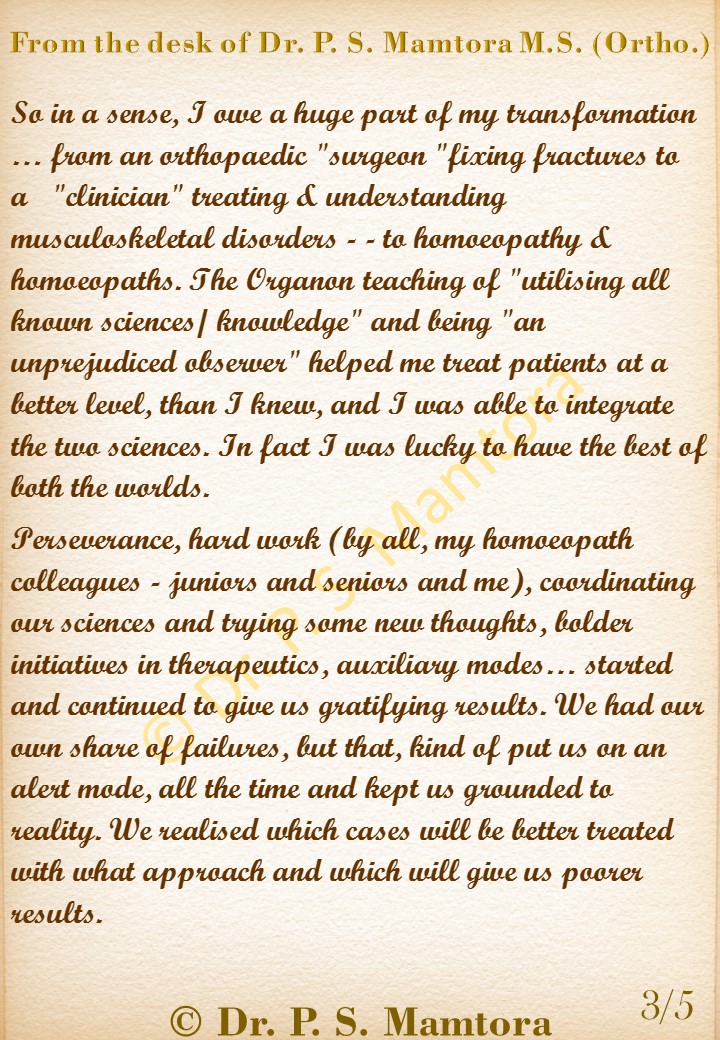
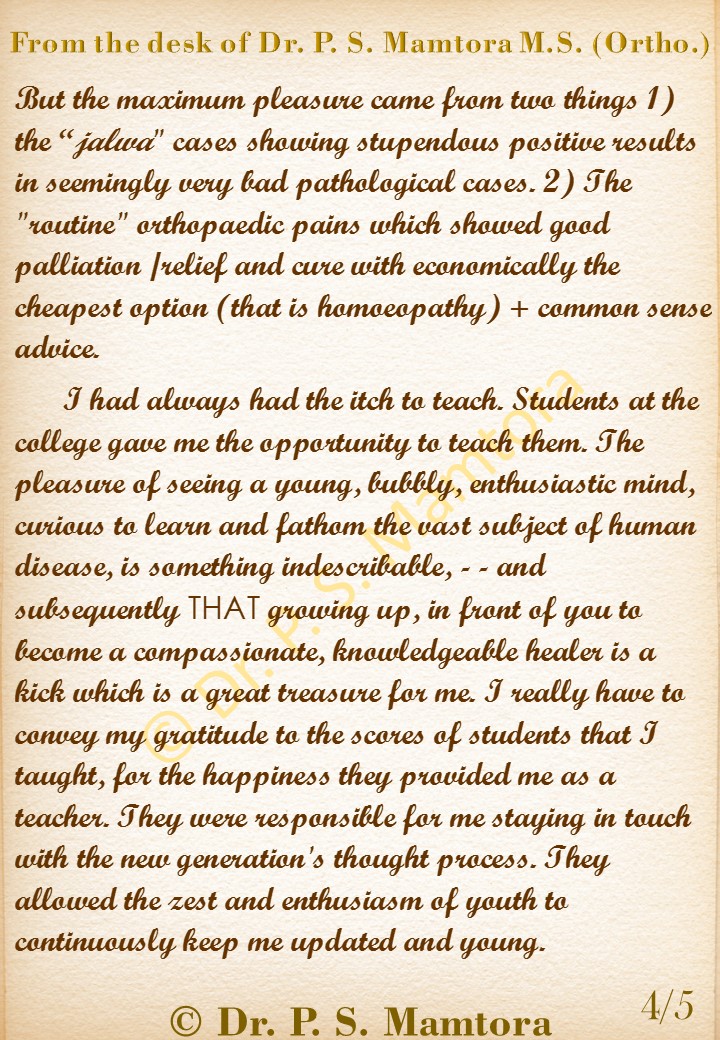
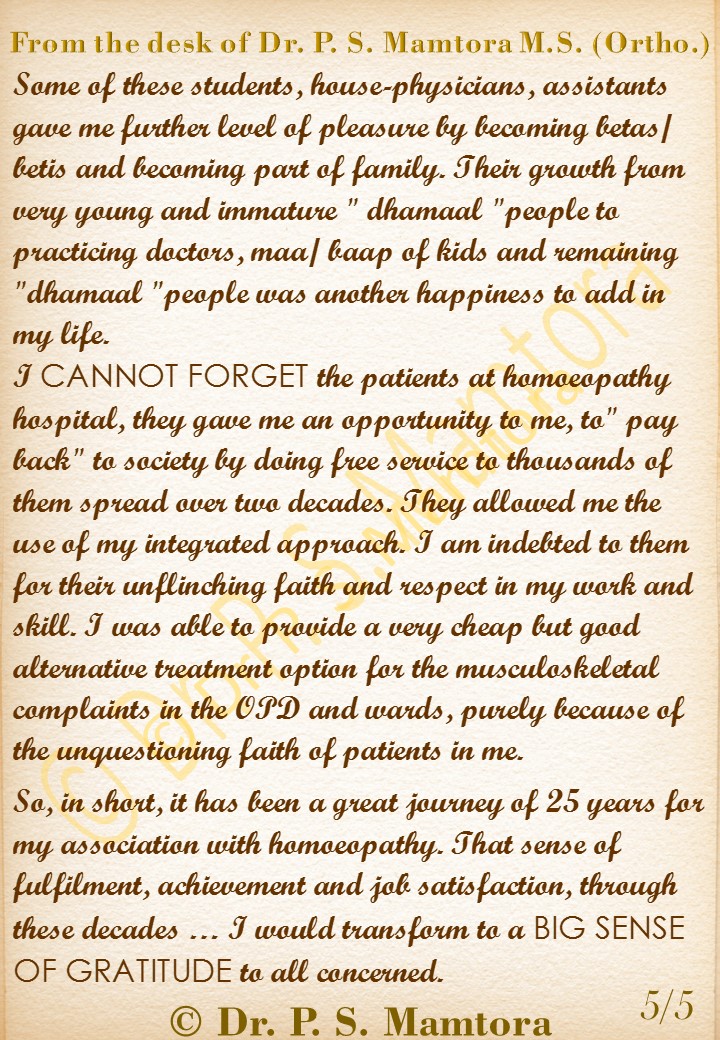
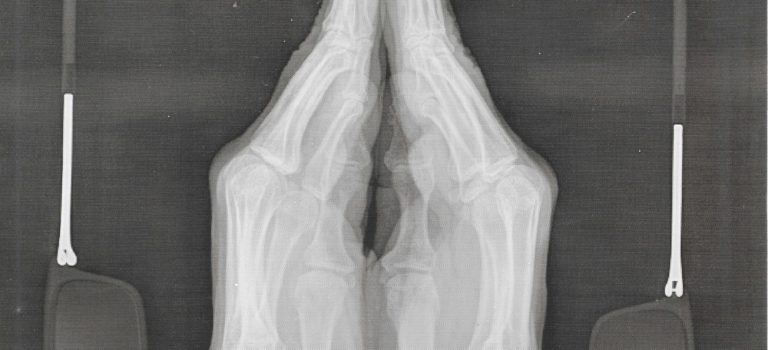
Completing 30 years of Orthopaedic Practice – Gratitude
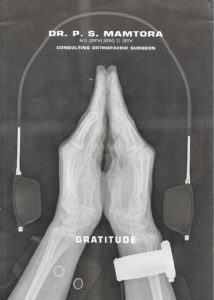
GRATITUDE
11/2/1990 to 11/2/2020
30 YEARS OF PRIVATE PRACTICE AS AN ORTHOPEDICIAN.
I take this opportunity to thank all my patients through this 30 years for allowing me to serve them, to allow me to treat their bone, joint, muscle problems / disorders.
It has been a fabulous journey for me as a person and as an orthopaedic surgeon.
The feeling of gratitude is very deep for all the people whom I have treated in this long time. Different people, different personalities, different attitudes in life, different bodies healing differently – all have taught me different things over a period of time. It has helped me grow as an orthopedician and improve my treatment skills / outcomes, widen my horizons of the treatment possibilities and also grow as an individual in life.
Ofcourse I have to say that you patients are the source of my livelihood and through that allowed me to stay good; allowed me to stay upright, non corrupt.
You all have taught me positive attitude, discipline, tolerance, humour and patience. Those patients who did NOT want surgery – allowed me to learn, explore and give different possibilities of non surgical care to orthopaedic disorders (which created my beautiful transition from a regular Orthopedic Surgeon to a conservative orthopaedic physician). This conservative bent was also greatly supported and helped by my connection to The Yoga Institute and the Homeopathic Medical College and Hospital.
I also am indebted to my other medical colleagues who have always supported me in all these years. I also have to thank all the physiotherapists who supported my line of treatment strongly and taught me new avenues – so that I could help my patients recover nonsurgically.
I also am grateful for your patience you people keep – sitting for hours in my waiting areas and LASTLY THANKS A TON FOR HAVING FAITH IN ME, MY TREATMENT.
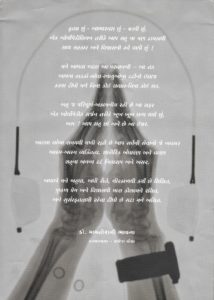

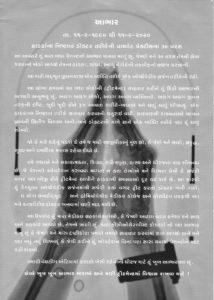
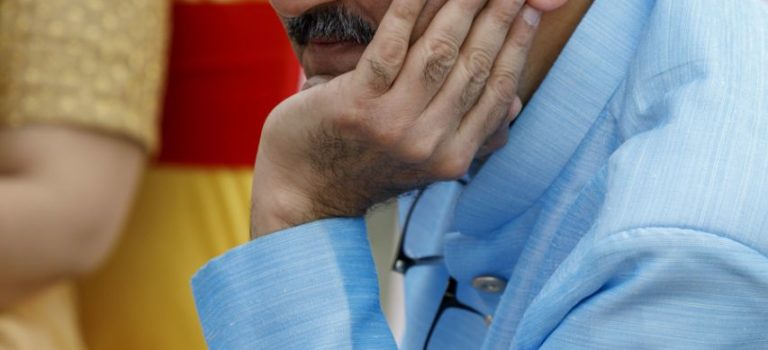
AI Integration in Healthcare
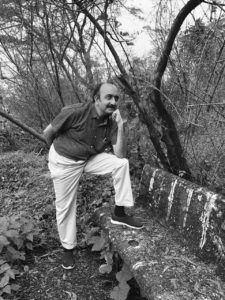
THOUGHTS ON HEALTHCARE | INTEGRATION | AI
Science has its basic tenets: Observation, objectivity, seeing the entirety & honesty. Medicine being a science MUST have these on top of that, it also must incorporate “the art”.
As we are moving at a rapid pace towards AI (Artificial Intelligence) in health care, our era of doctors have to be careful in what direction we take the AI. We doctors(any pathy, any speciality) are essentially clinicians and healers. Though we have to be OBJECTIVE & UNPREJUDICED in our evaluation and understanding the diseased state of our patient, we have to be SUBJECTIVE in the approach to each individual’s treatment. Since we deal with individual humans who react differently, we have to keep our HUMANE, INDIVIDUALISTIC, SUBJECTIVE touch in health care delivery. This is essential for the long term and overall betterment of the treatment of human diseased states.
We have the evidenced based medicine (EBM) helping us get better & better – BUT we should not forget that:
- New evidence is not the only evidence:
Eg. – Fractures of radius ulna treated by square nails or fractures of tibia fibula treated by conservative Sarmiento’s method are now “out of fashion”, but what about their old evidence of thousands of fractures that healed well for decades across different centers?
- The basics of anatomy, physiology, pathology and healing processes have not changed in humans overall and that honesty towards what is working on a day to day basis over a long period of time cannot be disregarded.
Eg. – Lot of acute inflammatory episodes in musculoskeletal disorders are given “Neuromodulators” because they are “safe” – whereas NSAIDs which are actually needed for the pathology are not given because they are “unsafe” (though it is very easy to monitor their use & side effects).
As I said before, we humans needed a subjective human touch for getting treated. These days we tend to disregard anything that is NOT new/modern or NOT from our branch/speciality or NOT from our pathy. Lot of evidence from basic sciences, paramedical sciences, other pathies’ scientific offerings are not known or not given any importance because it is not in the mainstream literature. We are becoming speciality fanatics more like the religious fanatics. The need of the hour is the INTEGRATION & ASSIMILATION of ALL these human body related knowledges, data, research from different specialities and pathies – along with individual experiences of clinicians. These accumulated data should be put into a COLLECTIVE CYBORG KIND OF AI; which will drive human healthcare to a truly higher level.
The WISDOM of humans (especially in medical management) cannot be murdered because of mere collection of information touted as EBM.
Eg. – Recent “Evidence” says DO NOT give calcium and Vit.D because it blocks heart arteries & does not help bones. But how about going to the basics which tells us that bone physiology cannot work without calcium and Vit.D metabolism being intact? In Osteoporosis, if all drugs are to work well, they have to have a system replete in Vit.D and calcium. If you do not treat Osteoporosis well – where calcium & Vit.D supplementation is integral – you end up with high health care cost of bedridden morbidity/mortality from fractures. So, it is like the old saying: Information is that tomato is a fruit & wisdom is not putting that tomato in the fruit salad.
Availability of information as sole evidence is detrimental to healthcare delivery – as all of us have experienced from the “google doctor” patients we treat. YouTube videos of exercises CANNOT ever replace the expertise, individual tailoring, supervision and guidance of a trained discerning physiotherapist. The individualistic, humane healthcare delivery here is important, if the patient has to get really better from proper physiotherapy.
When the AI will replace a pathologist &/or a radiologist, then who will write the newer advances and imaging algorithms, who will be able to give a clinico-pathological/clinic-radiological correlation?
Eg. – An Otrhopaedist talks to a MRI consultant on correlation in a case where minor information & clinical hunches are settled on discussion (that will be missed in the AI).
Not allowing the stupidity of following AI algorithms blindly is important to prevent disasters in healthcare delivery – Disasters like the ones created by AI in Boeing plane crashes & Tesla’s (car) autopilot feature. Remember, the AI is only as good as the person who programed it.
So the COLLECTIVE CYBORG should be the center of future AI – if it were to be of real human help. And if the healthcare delivery starts becoming like an “app” (Eg. – Tours/Travels app), then it will need a human interface to upload patient information & download/deliver healthcare in the correct, individualized format. That AI end point deliverer of healthcare will be the GP. The original FAMILY DOCTOR, who is now on the wane – WILL HAVE TO BE REBORN & REVIVED in a fresh avatar. This GP of AI will coordinate, give the humane touch, individualize the treatment & deliver it to the patient.
We are presently at the edge of the cliff of AI in healthcare. The next 25-50 years will show whether we fly off to way beyond our human potential by using COLLECTIVE CYBORG MODEL of Star Trek or hurtle down crashing into the abyss of healthcare by following the STUPIDITY of non-human computer algorithms as in the movie Idiocracy.
I am an eternal optimist & a huge fan of Star Trek.
-Dr. P. S. Mamtora
Orthopaedic Surgeon
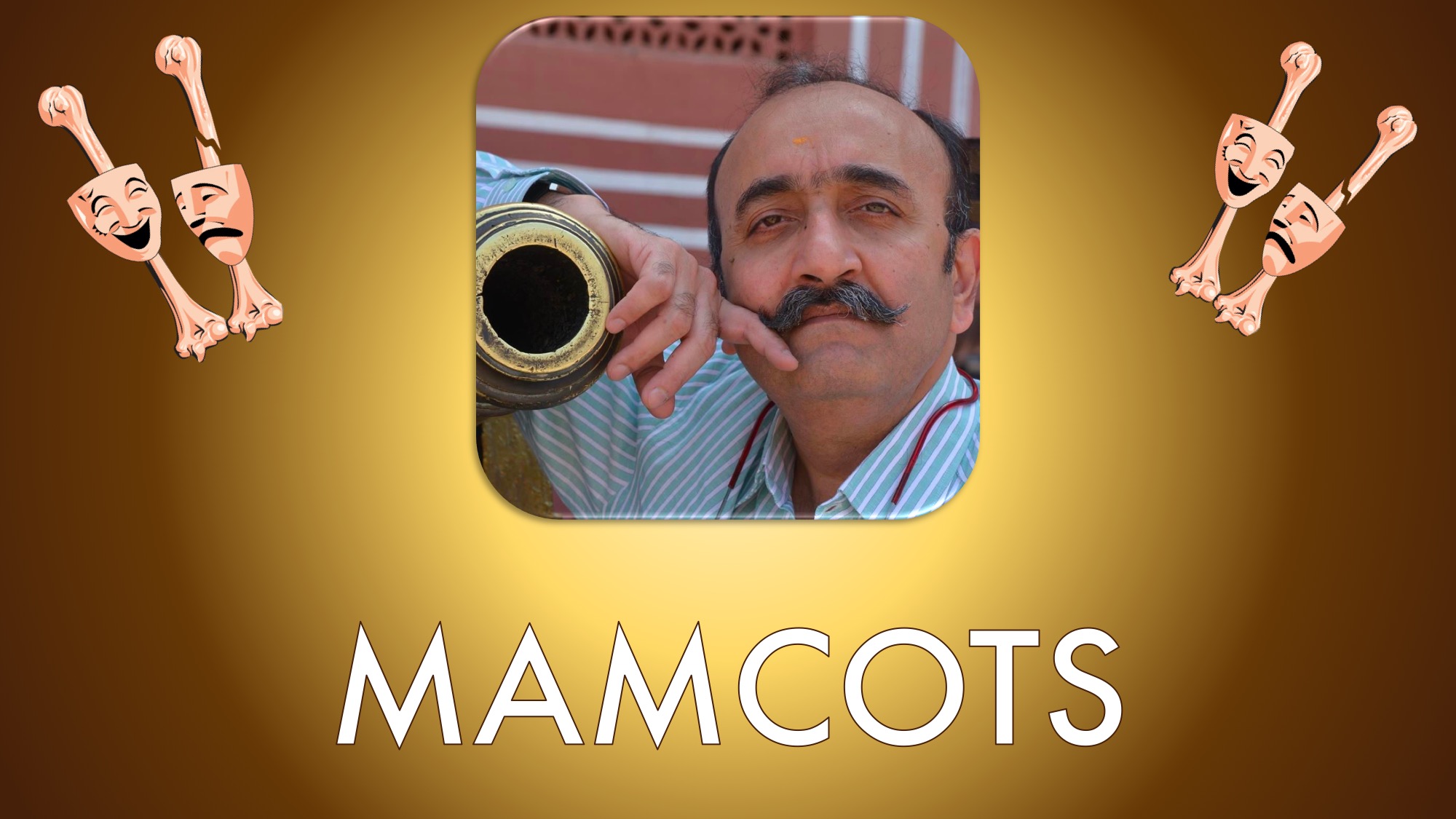
Orthopaedic Trivia
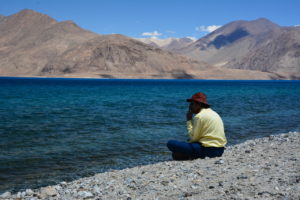
ORTHOPAEDIC TITBITS
- Your bones are composed of 31% water.
- Your bones, pound for pound, are 4 times stronger than concrete.
- Bone is stronger than some steel.
- Bones make up only 14% of our weight.
- The muscles of our body constitute 40% of our body weight.
- If you remove the minerals from a bone by soaking it overnight in a six percent solution of hydrochloric acid, it will become so soft, you could tie it in a knot.
- The strongest muscles of the human body are masseters, which are present on either side of the mouth.
- The thighbone is so strong that it withstands the axial load of about 1600-1800 kilos.